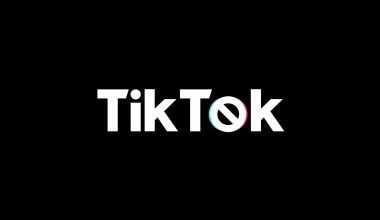Getting your music on digital stores has become essential for artists. But many musicians hesitate, thinking they need a distributor to make it happen. Here’s the good news—you can share your track on all digital stores without a distributor. Yes, it’s possible, and it’s simpler than you might think.
In this guide, I’ll walk you through the steps, tools, and tips to help you make your music available to listeners around the world—all on your terms. Let’s dive in!
Sharing your music without a distributor gives you more control. Distributors often take a percentage of your earnings, leaving you with less than you deserve. By skipping the middleman, you keep all your royalties. Plus, you can manage how your music is released, promoted, and monetized.
Another reason is accessibility. Some independent artists find distributor services too expensive or restrictive. Sharing your track independently eliminates this barrier and makes the process more flexible.
Platforms That Allow Direct Uploads
There are a few platforms where you can directly upload your music without relying on a distributor. Here are some popular options:
- SoundCloud: SoundCloud is perfect for independent artists. You can share your tracks directly, build a fan base, and even monetize your music.
- Bandcamp: Bandcamp is a favorite among indie musicians. It lets you sell your music directly to fans and keep most of the revenue.
- YouTube Music: Create a YouTube channel, upload your tracks, and tap into the vast audience on YouTube Music.
- Audiomack: This platform allows free music uploads, making it easy for artists to reach their audience without any upfront costs.
Sharing your track on all digital stores without a distributor requires a bit of effort, but it’s straightforward when broken into steps:
- Prepare Your Track
Ensure your music is high-quality. Use professional mixing and mastering to make it sound polished. - Create Cover Art
Digital stores require eye-catching artwork. Use tools like Canva or hire a freelance designer to create professional cover art. - Choose Your Platforms
Decide where you want your music to be available. Consider platforms like Spotify, Apple Music, and YouTube Music. - Register Your Music
To earn royalties, register your track with a performing rights organization (PRO) like ASCAP or BMI. - Upload Your Music
Each platform has a different upload process. Follow the guidelines carefully, ensuring you meet the format and metadata requirements. - Promote Your Release
Once your track is live, use social media, email newsletters, and collaborations to spread the word.
Tools to Simplify the Process
If you’re worried about the technicalities, there are tools to help:
- DistroKid Alternatives: While DistroKid requires a subscription, platforms like Amuse offer free distribution services.
- Free Mastering Services: Services like LANDR and BandLab provide automated mastering for professional-quality sound.
- Graphic Design Tools: Use Canva or Adobe Express to create stunning visuals for your release.
Pros and Cons of Going Distributor-Free
Let’s weigh the benefits and challenges of sharing your track without a distributor:
Pros
- Higher Revenue: Keep 100% of your royalties.
- Creative Control: Decide how and where your music is shared.
- Cost-Effective: Avoid paying distributor fees.
Cons
- More Work: You’ll handle everything from uploads to promotion.
- Limited Reach: Some stores only accept uploads through distributors.
How to Maximize Your Reach
Sharing your music is just the first step. To get the most out of your efforts:
- Optimize Metadata: Ensure your track title, artist name, and genre tags are accurate.
- Engage with Fans: Reply to comments, share behind-the-scenes content, and build a loyal community.
- Collaborate with Creators: Partner with influencers or other artists to broaden your audience.
Common Mistakes to Avoid
Even if you’re excited about sharing your track, avoid these pitfalls:
- Skipping Registration: Always register your music with a PRO to ensure you get paid.
- Poor Audio Quality: Don’t compromise on mixing and mastering.
- Ignoring Promotion: A track without promotion won’t reach its full potential.
Success Stories of Independent Artists
Many artists have successfully shared their music without a distributor. Take the example of Chance the Rapper, who bypassed traditional distribution methods and made millions. Or look at artists on Bandcamp who earn a living by selling directly to fans.
Final Thoughts
You don’t need a distributor to share your track on all digital stores. By following the steps in this guide, you can take full control of your music career and reach listeners worldwide. Start today and show the world what you’ve got!
For further reading, explore these related articles:
- Monetize Your Remix on YouTube Music as an Independent Artist
- How to Monetize Your Remix on YouTube Music Without a Label
- Monetize Your Remix on YouTube Music With No Upfront Fees
For additional resources on music marketing and distribution, visit DMT RECORDS PRIVATE LIMITED.






